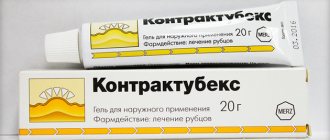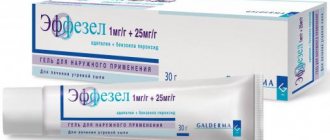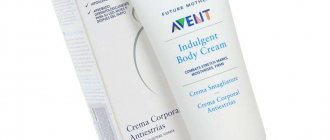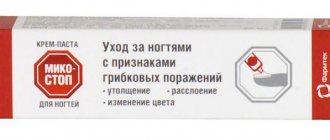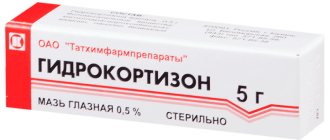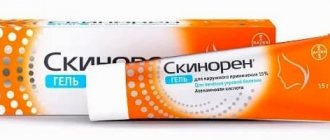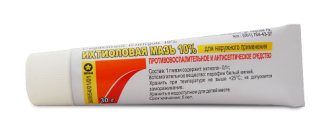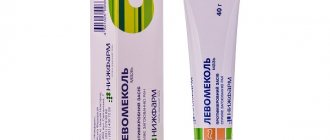Instructions for use
For calluses and corns
So, how to use Salipod:
1) Wash and steam your foot in warm water for 10 minutes, wipe it dry
2) Cut out an area the size of a callus from the brown plaster
3) Remove the protective film from the cut piece
4) Stick on the affected skin
5) Stick a regular white plaster on top - it is just needed for fixation.
6) After a day (for large calluses - after two days), remove everything. Remove carefully, smoothly, without jerking, so as not to tear off along with the skin.
7) If the corn or callus is just as hard, repeat the procedure again.
 If it has become soft and mobile, then let the whole thing dry out, don’t glue anything else. The softened and exfoliated skin will gradually dry out and peel off on its own (within 7-10 days).
If it has become soft and mobile, then let the whole thing dry out, don’t glue anything else. The softened and exfoliated skin will gradually dry out and peel off on its own (within 7-10 days).
How to use Salipod for warts and spines
The instructions are approximately the same as for corns.
1) Only the gluing time is 1 day.
Glue Salipod onto the spine
2) After a day, carefully remove the patch. The result will be a picture similar to this photo.
View of a wart in a day
3) Cut the spine with nail scissors at the root, parallel to the skin. There is no need to rub with a pumice stone - if you erase the surrounding healthy skin, there will be a wound.
4) Apply the callus patch again directly to the cut site of the spine for a day. On top is a regular patch.
5) The next day, remove the patch - let the wound dry out on its own and the old skin come off.
6) Attention: try not to stick the patch on healthy skin to avoid peeling and creating a painful wound.
7) After three days, the picture will look approximately like the one in the photo below. That is, the wart did not go away. Not only that, but it continues to grow. The reason for the ineffectiveness of treating warts with salipod is that it does not kill the human papillomavirus, which causes the growth of the spine. A callus patch simply softens the skin on and around the surface of the wart.
The wart remains
 The further task is to influence the wart with cauterizing substances. For example, solcoderm, duofilm, super celandine (more about super celandine). Either remove it with a laser (read about laser removal of warts) or liquid nitrogen (read more about cryodestruction of warts with nitrogen).
The further task is to influence the wart with cauterizing substances. For example, solcoderm, duofilm, super celandine (more about super celandine). Either remove it with a laser (read about laser removal of warts) or liquid nitrogen (read more about cryodestruction of warts with nitrogen).
What are core calluses?
A special feature of this type of callus is a core deeply embedded in the soft tissue. Therefore, it is very difficult to remove them. Using conventional methods, only the upper part of the callus is softened, and the root is not affected.
A callus appears due to prolonged exposure to one area of the skin of any irritants. Most often these are uncomfortable shoes. Therefore, such calluses appear mainly on the soles of the feet, most often on protruding places, in the area of contact with shoes or between the toes. They can form in athletes, in people who are overweight or who spend a long time on their feet.
Review of drug analogues
There are no direct analogs (containing similar active components: salicylic acid and precipitated sulfur) of Salipod. Based on their pharmacological effects on skin tumors, the following agents for external use are distinguished:
- Mozolin and Compid, produced in the form of adhesive plasters.
- Feresol.
- Verrucacid.
- Urgokor callus.
- Callus 911.
- Flexitol.
- Balsamed intensive.
- Hemosol.
- Collomak.
- Papilleck.
Contraindications
"Salipod" cannot be used in the following cases:
- increased sensitivity of the skin to the components of the patch (manifests in the form of skin irritation);
- allergies to the components of the product;
- the presence of moles in the area where the drug is applied;
- renal failure;
- period of pregnancy or lactation;
- healthy skin;
- children under 10 years of age;
- the presence of wounds on the skin, cracks, ulcers and pimples;
- open calluses with fluid inside.
Important! The patch cannot be used simultaneously with zinc oxide and resorcinol.
If the list of contraindications is ignored, side effects may occur. This is itching, redness of the skin and burning. Usually all reactions pass quickly. If red spots develop, we are most likely talking about contact dermatitis. To avoid worsening the situation, use of the patch should be stopped.
Advantages and disadvantages of using the patch
The adhesive plaster for skin growths is an elastic base with a fabric layer impregnated with active substances. The effectiveness of the product is high. Removing the formation takes a short period of time. During this time, the superficial stratum corneum of the wart dissolves, subsequent tissues soften and can be easily removed mechanically using a file, pumice stone and other means.
In addition to the main substance that has a keratolytic effect, many manufacturers add an antimicrobial, drying component to the composition. This allows you to prevent the addition of a secondary bacterial or fungal infection.
The drug is inexpensive and provides comprehensive treatment.
The main disadvantage is the need for long-term wearing and regular replacement to achieve a lasting therapeutic effect. This increases the risk of irritation and allergic reactions of healthy tissue.
Indications for use
The instructions for use indicate that the patch is used to combat:
- calluses (dry and core);
- corns;
- warts;
- and spines.
The Salipod patch is used as a local remedy. In addition, the drug can be used to soften the “bones” located on the big toes (usually they are formed as a result of constant walking in heels, prolonged standing, or excess calcium in the body).
For the treatment of warts, the Salipod patch can be used as an additional therapy.
How much does it cost and storage rules?
Salipod is a low-cost product. It can be purchased in pharmacies for about 30 rubles. It will be most effective if you follow the rules for storing it. First of all, such a patch should be stored at room temperature no higher than 25°C. Do not allow it to get in contact with water: this will cause its medicinal properties to be lost.
The shelf life is no more than two years. It is not recommended to use it after the specified period has expired. Not only will it no longer bring any benefit, but it may also cause unwanted allergic reactions on the skin. If there is any side effect from careless or inept use of such a patch, you should consult a doctor and show him the drug.
Salipod is a highly effective treatment for calluses. Like any other medicine, it should be used carefully and only after reading the instructions for use. In general, side effects from treatment are very rare. The vast majority of patients noticed a significant improvement in their skin condition.
Price for Salipod patch
You can buy Salipod through online pharmacies or classic pharmacy departments. The cost will depend on the size of the patch purchased and the level of the pharmacy's markup. Approximate capital prices are shown in the table:
| Variety | Price when purchasing online, rubles | Price when purchased through a pharmacy, rubles |
| Corn adhesive plaster, size 2*10 cm. | 54 | 59 |
| Set of 11 pieces | 97 | 107 |
| Size 6*10 cm. | 55 | 60 |
Side effects
When applied topically, Salipod rarely causes side effects on the body. Possible manifestations include allergic reactions, redness, burning and itching at the site of gluing. The symptoms pass quickly and do not cause inconvenience to the patient. If red spots develop, this may indicate signs of contact dermatitis. To avoid making it worse, it is recommended to stop using the patch. You should do the same if you feel a sharp burning sensation and pain, the skin swells and becomes inflamed.
Customer Reviews
Evgeniy, 28 years old, Moscow I have to constantly wear tight shoes in winter.
A wart grew on my foot from constant rubbing. At first it was unnoticeable, but after walking for a long time it began to increase in size. The growth made it difficult to step on my foot normally and caused discomfort. On the recommendation of the pharmacist, I used Salipod. I applied the patch 3 times and kept it on for 24 hours. Each time I cut off dry areas of skin. There was nothing left of the wart, the skin had healed well. There were no side effects.
Ekaterina, 31 years old, Ufa A wart grew on her hand; constant walking in heels contributed to the formation of hard calluses. To kill two birds with one stone, I decided to stick Salipod on all the growths.
I cut out small pieces and wrapped them with regular adhesive tape over them. After 2 days I removed the product. The procedure had to be repeated 3 more times, but the results were worth it. There is nothing left of warts and calluses, I leave a good review.
How to use Salipod
To apply the patch:
- Cut the adhesive plaster according to the size of the callus. A little more is allowed.
- Peel off the protective film.
- Apply the adhesive plaster to the problem area and stick it gently.
- To fix it better, you can secure the product with a bandage or a simple plaster.
- Leave for two days.
- At the end of the period, peel off Salipod.
How to choose a patch for calluses, watch this video:
If the keratinized area has not softened, a new adhesive plaster should be applied up to three times. After the callus has softened, it is not allowed to use pumice. The formation will disappear on its own when walking.
Side effects
Side effects are rare when using Salipod. However, in some cases, allergic dermatitis may occur, which is accompanied by the following symptoms:
- hyperemia and irritation of the skin;
- itching and burning sensation in the problem area;
- skin soreness;
- the appearance of a rash under the adhesive bandage.
If these symptoms occur, it is important to remove the adhesive bandage and rinse the skin with water.
Compatible with certain medications
The Salipod adhesive plaster is incompatible with the following medications:
- preparations based on zinc oxide;
- Resorcinol;
- Methotrexate;
- sulfonylurea derivatives (medicines for diabetes).
Advantages and disadvantages of Salipod
Salipod has a number of advantages compared to other root callus remedies:
- It can stay on the skin for a long time, so you won’t need to change it very often - only once every two days.
- It is considered an environmentally friendly drug with a keratolytic effect.
- The adhesive plaster contains effective and simple substances.
- Does not cause skin irritation.
- Can be used for prophylactic purposes to prevent fungus and bacterial infections in problem areas of the skin.
- Fast, painless and effective action.
- Salipod is inexpensive. The average price for one piece is from 30 to 60 rubles. You can buy a set of 11 sheets for up to 125 rubles.
Benefits of use
Quite often, calluses cause a lot of suffering to a person. Many people try to get rid of them using folk remedies, making various baths or compresses. But this is quite labor-intensive and not always effective. It is much more convenient to use special medications. Of these, the most popular is the “Salipod” patch for core calluses. Reviews note that it has the following advantages over other similar drugs:
- in addition to removing fresh calluses, it is effective against old formations with roots;
- it not only softens dead skin, but also relieves pain;
- It is easy to use at home; in most cases, calluses disappear on their own;
- the acidic environment created by the main active ingredient of the patch prevents the development of fungal diseases;
- in addition to softening components, it contains antiseptics that prevent wound infection;
- The use of the patch has almost no side effects on the surrounding skin.
Treatment nuances
To get the effect of using a dermatotropic agent and reduce the risk of adverse reactions, you should adhere to the following rules:
- Before application, you should take a hot bath and place your feet in warm water, then thoroughly dry your feet with a towel;
- do not use Salipod on neoplasms of an unspecified type, burns and wounds;
- before application, you should switch to insulin, since salicylic acid increases adverse reactions from the use of hypoglycemic agents;
- replace sulfonylurea-based drugs with other medications;
- Do not use the patch while taking Resorcinol and zinc oxide.
During pregnancy
Salicylic acid and precipitated sulfur can enter the blood. When exposed to the skin, the active components affect capillary vessels and therefore enter the circulating bloodstream.
Through the mother's blood, they easily penetrate the placental barrier, which is why they can provoke the development of intrauterine anomalies in the fetus. To avoid unpleasant consequences, it is not recommended to use Salipod during pregnancy.
Use for children
Salipod can be used to treat skin tags from the age of 10 years. For younger children, the use of a dermatotropic drug is not recommended. This is due to the delicate epithelium with many capillary vessels and nerve endings. The skin is still developing, so salicylic acid and sulfur can cause an allergic reaction, thinning of the skin, and bleeding.
Salipod callus set
If possible, it is better to treat corns before they become very rough and form a core. You can use it with a helium pad for this. Apply for 10 – 12 hours and secure. If the foot is affected, it is better to use the sticker at night. After removing the bandage, steam the softened skin and remove it using a pumice stone or a special foot grater.
To remove the rods, a callus kit is available:
- Sulfur-salicylic strip in cellophane packaging.
- Regular roll.
You should cut a piece of the treatment strip to the size of the callus. Those who know how sulfur works recommend sticking a regular patch around the callus. Then the active components will not get on healthy skin, causing irritation. Then peel off the protective film and place a piece of the composition on the callus. Secure with adhesive tape. The acid will act for 10 hours. Then you need to remove everything and see the results. Old calluses do not come off at once; you should use several patches one at a time, gluing them on at once, without allowing the core to recover. When the edges of the rough growth rise, you can drop iodine onto the root and leave it open. After about a week, the dried root will easily emerge from the healthy tissue. After each session, the treated area is steamed and dried.
Salipod for calluses and warts: brief description
What is a callus adhesive plaster "Salipod"? From a pharmaceutical point of view, this is a dermatotropic drug that eliminates dry calluses, warts, and also has an anti-inflammatory effect on keratinized skin from corns.
This effect is achieved due to the components that make up the medicine. Salipod callus includes:
- Salicylic acid is a substance that forms an acidic environment on the surface of keratinized skin, which prevents the spread of fungal infection;
- Sulfur, which dries the skin so that open wounds do not form at the site of calluses and warts (this product gives the medicine a specific smell);
- Lanolin, rosin and rubber are substances that enhance the therapeutic effect of Salipod against warts.
As a rule, Salipod for corns is available in two forms:
- 6*10 is a small adhesive plaster that needs to be applied to the problem area so that the healthy skin of the foot does not fall under the area of its influence.
- A medicine consisting of two adhesive plasters:
- Dark adhesive plaster – 2*10, which is impregnated with medicinal substances
- Light adhesive plaster – 4*10, necessary to fix the dark adhesive plaster
Salipod for dry calluses has an affordable price, so everyone can afford it. You can purchase the drug at any pharmacy, as it is in wide demand.
What's included
contains safe components that rarely cause allergic reactions. The active ingredient in the adhesive plaster is salicylic acid. In 100 g of product its amount is 32.8 g.
The auxiliary components of Salipod are:
- lanolin;
- precipitated sulfur;
- pine rosin;
- natural rubber.
How it works on root calluses
The active substance of the patch promotes the destruction of keratin, which is involved in excessive keratinization of cells and the formation of calluses.
The principle of action is that salicylic acid, penetrating deep into the stratum corneum, destroys and separates it from new skin cells.
Salipod also has the following effects:
- Antiseptic property. The acid contained in the adhesive plaster kills various pathogenic microorganisms (bacteria and fungus), and sulfur prevents their growth and reproduction.
- Softening of rough epidermal tissue. In addition, the substances of the drug dry and soften the callus.
- Strengthening microcirculation. As a result of this property, the regeneration process in the skin is accelerated.
- Prevents the development of the inflammatory process.
Indications for use
The instructions for use of the drug indicate that the drug is used to soften keratinized areas of the skin of the legs and arms. Therefore it is indicated in the following cases:
- dry callus (including root callus);
- corns;
- spines.
An adhesive plaster can be used to soften heel spurs to extract their roots. Salipod is also used to prevent bacterial infections and fungal flora from entering the root callus and corns.
Restrictions on use
There are some contraindications for the use of callus adhesive plaster. These include:
- moles;
- increased skin pigmentation;
- boils;
- black and whiteheads;
- acne;
- burns;
- scratches and wounds;
- wet calluses that may break open.
For a review of callus patches, watch this video:
It is not allowed to use Salipod on the genital area, the skin under the arms and in the eye area.
Also, do not apply adhesive plaster to irritated skin.
Contraindications are the following body conditions:
- breast-feeding;
- period of bearing a child;
- age up to ten years;
- tendency to allergic reactions;
- individual hypersensitivity to substances contained in the adhesive plaster.
Salipod is used with caution and only after the appointment of a specialist for the following diseases:
- renal failure;
- allergic diseases;
- diabetes.
It is not allowed to stick the drug on healthy and sensitive areas of the skin.
